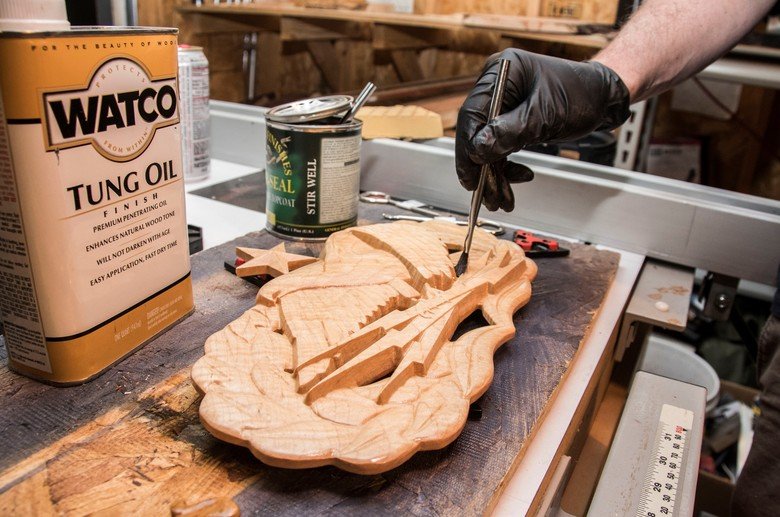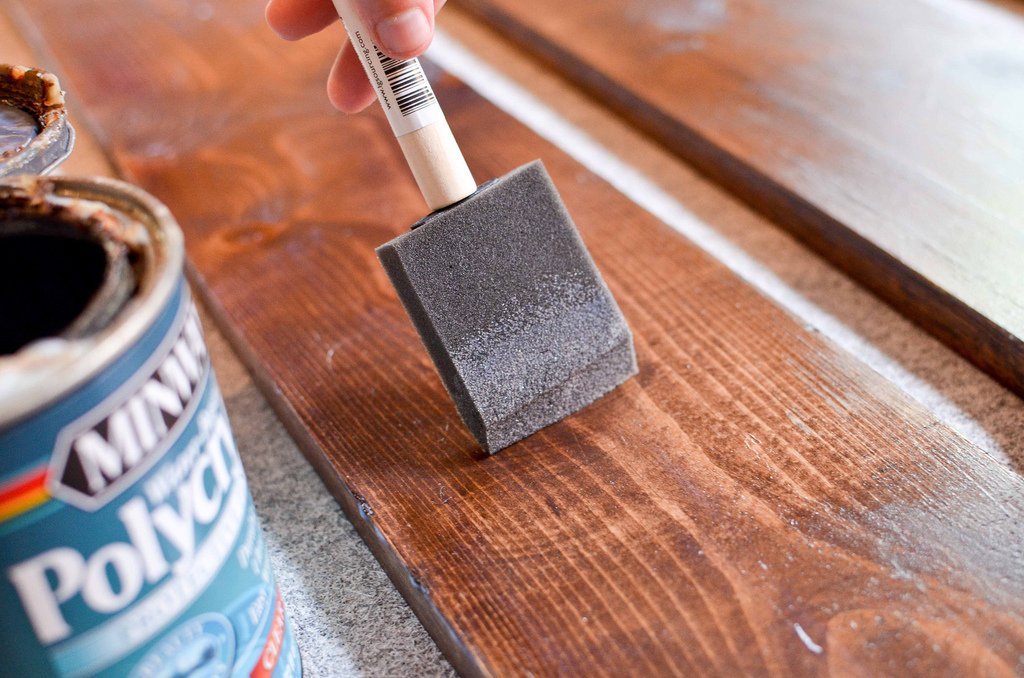Water based and oil based stains are the common types of stains for woodwork. You need to be careful when choosing stains for wood exposed to external weather conditions as they will deteriorate over time.
Wood can become rotten or cracked if you use the wrong stain. Therefore, its important to find out what is the best stain for such kind of wood?
Table of Contents
Water Based Stain
The water based stain is made by mixing colored pigment with water as a solvent. If applied to a surface, the water evaporates much faster leaving behind the elegant color of the pigment.
Advantages Over Oil Based Stain
The water based stain is safer to use in enclosed or open places with or without proper ventilation because it does not emit poisonous fumes or odor. Therefore, if you need a stain that does not have a strong smell, a water based stain is the choice.
This quality also makes it eco-friendly and harmless to both human and animal health. Oil stain, on the other hand, emits VOCs (Volatile Organic Compounds) which have a pungent smell, flammable and harmful to our health.
Other advantages include:
Easy to clean – All you need is soap and water. oil based stains are harder to clean.
Mold and mildew resistant – Most wood, especially one left in the outdoors, are prone to mold and mildew. You need a stain to protect your wood from the fungi. water based stain offers protection against mildew and mold. Most oil stains do not offer such protection unless indicated on the label.
Dries faster – Often, people need a stain that will dry much faster when applied on wood, especially the indoor wood because water evaporates much faster than oil. In such a case, you better go for a water based stain.
Retains original color – Water is a better solvent than oil. Pigments dissolve much better in water making them retain most of their original colors for longer compared to the pigments in the oil based stain.
Breathability – Some of the commonly used wood such as redwood, cedar and cypress have a natural resistance to rot. When looking for stains to coat them, you better go for a water based stain. water based stains are more breathable.
As such, they give room for this type of wood to use its natural protection. water based stain also does not trap moisture which makes it more suitable for less dense wood such as cypress, redwood, and cedar. oil based stains, on the other hand, can trap the moisture in this type of wood making it less durable.

Oil Based Stain
oil based stain is made up of oil as the main substance, used in coating. It penetrates deeper into the wood forming a seal.
Advantages Over Water Based Stain
Excellent finish – Oil evaporates slowly. It takes longer to dry, giving it more time to spread more evenly and broader on the surface. This leaves a finer finish than when you use a water based stain. It is recommended for indoor furniture which needs an excellent finishing.
Maximum protection – oil based stain penetrates deeper into the wood giving it better protection from harsh weather conditions and fungal infections. The deeper penetration also increases the durability of the wood.
Oil is also thicker than water. If you apply the oil based stain, the wood will have a thicker seal. The more impenetrable seal protects the wood from harsh weather conditions such as heat, rain, wind among others.
You don’t need regular maintenance when you apply the oil based stain because it is long-lasting. When choosing stain for outdoor wood, perhaps you can consider the oil based stain.
Economical – An oil based stain is more economical than a water based one. Since a water based stain is thicker and milkier, you use more tone compared to an oil based stain. An oil based stain takes time to spread over a wider surface before it dries up as opposed to a water based stain which dries up much faster. You can apply the same quantity of an oil based stain on a broader surface than a water based stain.
How to Apply Deck Stain
To test the stain, get a sample of a wood surface similar to the one you want to apply it on. It will give you a glimpse of the final color that will appear. Once you are satisfied with the result, you can now go ahead and apply it. You can use a brush or a rag. A rag is preferable since it enables the stain to get rubbed well on the surface as opposed to the brush that will smear it.

